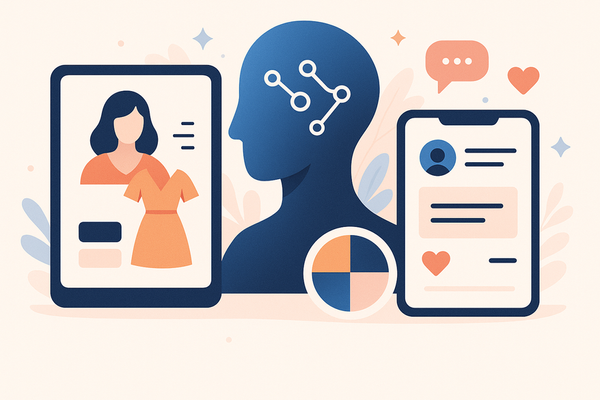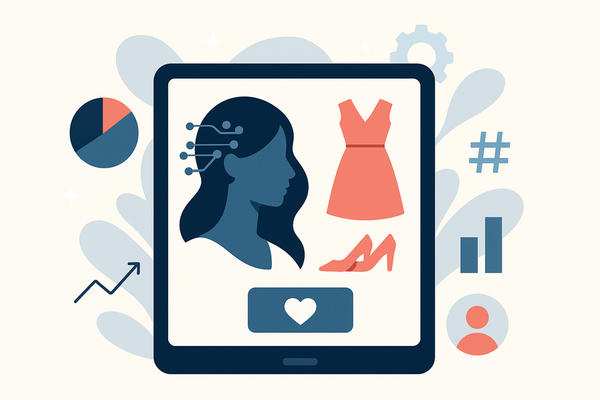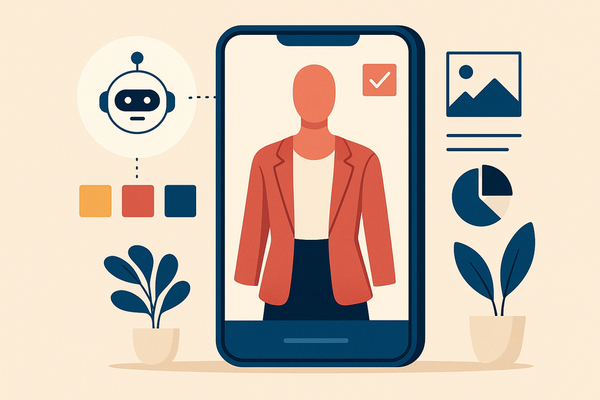Exploring 3 Case Studies of AI Styling Revolutionizing Fashion, Beauty & Design
Discover 3 case studies of AI styling transforming fashion, beauty, and design through innovation, personalization, and sustainability gains.

Estimated reading time: 7 minutes
Key Takeaways
- AI styling innovations are reshaping how brands personalize and scale fashion, beauty, and design services.
- Operational efficiency gains include faster outfit assembly, reduced waste, and lower production costs.
- Hyper-personalization via computer vision, NLP, and feedback loops drives higher engagement and conversion.
- Generative AI and AR/VR tools empower designers with digital prototyping and immersive customer experiences.
- Data quality and privacy remain core challenges alongside algorithmic bias and integration hurdles.
Table of Contents
- Context and Background: Case Studies of AI Styling
- Methodology for Case Study Selection
- Maxx Report: Hands-On AI Styling Reports
- Case Study 1: AI-Driven Fashion Styling at Scale
- Case Study 2: Personalized Beauty and Wellness Experiences
- Case Study 3: Corporate Integration of AI into Traditional Design
- Comparative Discussion
- Future Trends and Implications
- Conclusion
- Additional Resources
- FAQ
Context and Background: Case Studies of AI Styling
In this post, we explore key case studies of AI styling to understand how AI is revolutionizing styling across industries. AI styling refers to the use of machine learning, natural language processing, and computer vision to deliver tailored fashion advice, predict trends, generate new designs, or enhance the consumer experience beyond traditional methods. Precision in styling now comes from algorithms that analyze body data, user preferences, and visual trends to offer hyper-personalized looks—and many leading apps now bring these capabilities to consumers.
Reviewing case studies of AI styling is essential because analyzing real-world examples illuminates tangible benefits, challenges, and creative potential, providing a roadmap for brands and practitioners.
Early AI in styling began with simple recommendation engines using collaborative filtering. Over time, innovations expanded to:
- Virtual stylists powered by natural language interfaces.
- Trend prediction engines using social listening and generative AI.
- Visual search tools that match images to catalog items.
- AR/VR try-ons that let consumers “wear” products digitally.
Broader sector impacts:
- Fashion: Visual search and trend forecasting help brands cut decision fatigue and curb overproduction.
- Beauty: AI-driven skin analysis apps assess complexion and recommend customized regimens in real time.
- Design: Generative algorithms speed motif creation, rapid prototyping, and data-driven iteration.
Methodology for Case Study Selection
We applied four criteria to pick our examples:
- Innovation – Use of novel AI techniques such as computer vision or generative design.
- Measurable results – Clear KPIs in engagement, sales uplift, or waste reduction.
- Challenges encountered – Data quality, user trust issues, or technical integration hurdles.
- User engagement – Depth of personalization or interactive experiences delivered.
Industries profiled span major online retailers, beauty-tech startups, and luxury design houses. Reviewing these case studies is crucial for understanding real-world impact and creative possibilities.
Maxx Report: Hands-On AI Styling Reports
To explore your own style metrics in action, try out the AI-powered glow up and styling reports with Maxx Report. The app delivers personalized insights grounded in computer vision and ML.
Case Study 1: AI-Driven Fashion Styling at Scale
Background & Problem
Large online retailers faced a backlog in manual outfit curation. They needed to boost conversion without ballooning styling teams.
Technology Applied
• Machine learning models analyze purchase history, browsing behavior, and body measurements.
• Computer vision matches color palettes, textures, and current runway trends to inventory.
• Natural language processing powers chatbot stylists that converse in plain English.
Results & Metrics
• Outfit assembly became 5–10× faster compared to human stylists.
• Personalized email campaigns saw a 15–25% higher click-through rate.
• Overproduction dropped by 20–30%, cutting waste and markdown losses.
Case Study 2: Personalized Beauty and Wellness Experiences
Background & Problem
Beauty brands struggled to scale bespoke skincare and makeup guidance for millions of customers.
Technology Applied
• Facial recognition and deep learning analyze selfie data for skin tone, texture, and issues.
• A dynamic product database recommends cleansers, serums, and cosmetics based on real-time analysis.
• Feedback loops retrain models on user satisfaction and skin improvements over time.
Results & Metrics
• User engagement doubled; average session time rose by over 40%.
• Conversion rates climbed by 30% due to more accurate product matches.
• Return rates fell by 15% as recommendations aligned better with individual needs.
Case Study 3: Corporate Integration of AI into Traditional Design
Background & Problem
Luxury brands aimed to blend artisanal creativity with data insights for new seasonal collections. They needed faster prototypes and clearer trend signals.
Technology Applied
• Generative AI algorithms scan social media, runway feeds, and historical sales to predict motifs.
• Virtual prototyping platforms let designers test patterns and fabrics digitally, reducing physical sample production.
• Augmented reality try-ons showcase new collections virtually to buyers and influencers.
Results & Metrics
• Time-to-market for new lines shrank by 25%.
• Inventory markdowns declined by 18% due to better trend alignment.
• Physical sample waste fell by nearly 30%, supporting sustainability goals.
Comparative Discussion
Contrasting approaches reveals:
- Fashion retailers focus on operational speed and scale.
- Beauty tech prioritizes hyper-personalization and feedback loops.
- Design houses use AI as creative assistants and virtual prototyping tools.
Common benefits across all sectors include reduced waste, enhanced trend alignment, and greater operational agility, while shared challenges center on data quality, algorithmic bias, and privacy concerns.
Future Trends and Implications
Emerging innovations to watch:
- Multimodal AI combining images, text, and historical purchase data for richer insights.
- Immersive AR/VR try-on experiences that mirror in-store fittings.
- Predictive design engines that scan social media signals to anticipate next-season trends.
- On-demand manufacturing powered by precise demand forecasting, enabling just-in-time production.
Conclusion
These three case studies demonstrate how AI styling marries data-driven precision with human creativity. Personalization at scale drives engagement, speed gains streamline workflows, and sustainability benefits arise from lower waste—all while integration challenges around data quality, privacy, and brand voice must be managed. Together, these examples chart a clear path for future innovations at the intersection of AI and personal style.
Additional Resources
- AI Stylists: Revolutionizing the Fashion Industry (ViSenze)
- What Is an AI Stylist, and How It’s Changing Fashion Forever (Glance)
- How Artificial Intelligence is Revolutionizing the Fashion Industry (Techpacker)
- AI And Creativity In Fashion: Bridging Gaps (Heuritech)
FAQ
- What is AI styling? AI styling uses algorithms—like computer vision, NLP, and machine learning—to analyze user data, predict trends, and generate personalized fashion or beauty recommendations.
- How do brands measure success? Success is often gauged by KPIs such as conversion rate uplift, click-through rates, waste reduction, time-to-market improvements, and user engagement metrics.
- What challenges do companies face? Common hurdles include ensuring high-quality data, addressing algorithmic bias, preserving user privacy, and integrating new tools into existing workflows.
- Can AI styling replace human stylists? AI can augment human creativity and efficiency but typically works best in tandem with expert stylists to balance technical insights with personal touch.
- What’s next for AI in styling? Future trends include multimodal AI, immersive AR/VR try-ons, predictive designs powered by social signals, and on-demand manufacturing for sustainable, just-in-time production.





